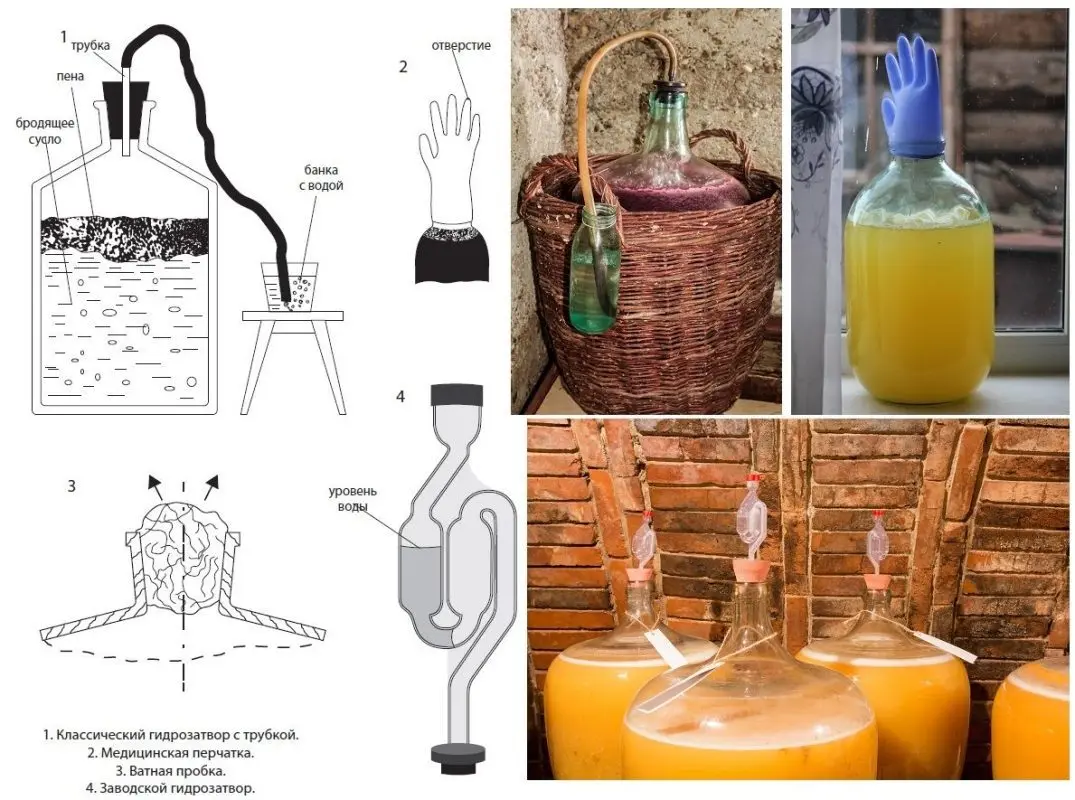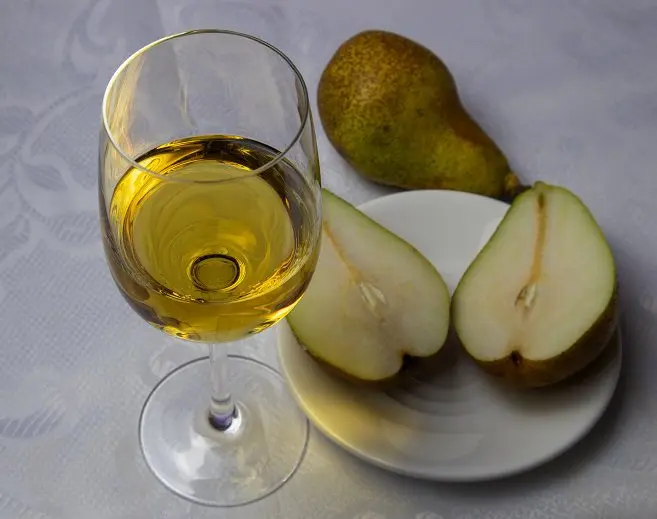Due to the fact that the smell of ripe fruits is transferred to the finished wine, it turns out to be fragrant and very tasty. When the time comes to harvest, I advise you to remember this recipe for homemade pear wine and repeat the cooking technology. The efforts spent will not be in vain, few can boast of such a drink, there will be a reason to surprise friends and relatives.
For pear wine, not only sweet juicy varieties are suitable, but also fruits that are not consumed fresh, for example, wild pears. Only the shade of the finished drink and the aroma, but not the taste, depend on the variety.
The main difficulty in cooking is that it is difficult to obtain pure juice from most varieties of pears, while it is necessary to preserve the aroma of the raw materials. I advise you to prepare in advance (wash with boiling water or steam, then dry) a fermentation container. It can be a bottle or a jar. In extreme cases, a container made of food-grade plastic or from under mineral water.
Ingredients:
- pears – 10 kg;
- sugar – 5 kg;
- water – 15 liters;
- raisins (fresh grapes) – 100 grams;
- citric acid – 20-100 grams (depending on the variety).
The normal acidity of wine must is 6-15 grams per liter. Most varieties of pears do not contain the required amount of acid, and when diluted with water and sugar, the acidity of the must becomes unacceptably low, as a result of which the wine turns out to be tasteless, quickly deteriorates and gets sick (mucus appears).
The easiest way to raise the acidity is with citric acid or juice (the juice of one medium-sized lemon contains 5-7 grams of acid). Without a special device – a ph-meter, it will not be possible to determine the acidity of the wort at home, you will have to act by eye. The sweeter the pears taste, the more acid you add (within the range specified in the recipe). Don’t be afraid to overdo it a little, it won’t ruin the taste.
Raisins are needed as a safety net in case there is no yeast left on the surface of the pears, which activates fermentation. Grapes work in the same way.
Pear wine recipe
1. Wipe dirty fruits with a clean dry cloth, I advise you not to wash. Pears cut in half. Remove core and bones. Carefully sort out the pulp, preventing rotten, spoiled and moldy parts from getting into the must, which can spoil the taste of the wine.
2. Twist the pulp in a meat grinder or chop in any other way to a puree state. The smaller the better.
3. In a container with a wide neck, mix pear puree, cold clean water, 3 kg of sugar, citric acid, unwashed raisins (crushed fresh grapes). Stir until sugar dissolves. Tie the neck of the container with gauze to protect against insects.
4. Transfer the must to a dark place with a temperature of 18-25°C and leave for 2-3 days. Once every 10-12 hours, stir with a wooden stick or a clean hand, drowning the pulp in the juice – the floating skin and pulp, so that there are no souring zones. After a day (usually earlier), foam will appear on the surface and a hiss will be heard, which means that fermentation has begun.
5. Strain the wort through a fine sieve or cheesecloth. It is good to squeeze the cake, it is no longer needed for making wine. Depending on the type of fruit, pear juice may remain cloudy after filtering, this is normal.
6. Pour the juice into a fermentation tank, fill to a maximum of 75% of the volume to leave room for foam, carbon dioxide and new portions of sugar. Install a water seal or an ordinary medical glove with a hole in one of the fingers (made with a needle) on the vessel.

7. Transfer the future pear wine to a warm (18-26°C) dark place for fermentation, which lasts 25-60 days.
After 5 days, add a new portion of sugar (1 kg). To do this, remove the water seal, pour 500 ml of juice through a tube into another container, dilute sugar in it, pour the resulting syrup back into the wort and install a water seal. After another 5-6 days, repeat the procedure by adding the remaining sugar (1 kg) according to the described technology.
If fermentation lasts longer than 50 days, so that bitterness does not appear, you need to remove the wine from the sediment and put it again under a water lock to ferment under the same conditions.
8. After the fermentation is over (the glove is blown off, the water seal does not blow bubbles for several days, sediment has formed at the bottom, the must has brightened), pour the young wine from the pears through a tube into another container, without touching the sediment at the bottom.
Taste and add sugar for sweetness if desired. You can also fix the wine with alcohol or vodka in an amount of 2-15% of the volume. The addition of strong alcohol aids storage, but makes the aroma less pronounced and the taste harsher.
Fill storage containers with wine to the top (it is desirable that there is no oxidation upon contact with oxygen) and close tightly.
9. Transfer the wine to a dark cool (6-16°C) place and leave for 3-6 months for aging (maturing). As sediment appears, first every 15-20 days, then less often, filter the drink by pouring it into another container. If sugar was added for sweetness at the previous stage, it is better to install a water seal for the first 7-10 days. Ready wine can be bottled and tightly closed.
When stored in a refrigerator or cellar, the shelf life of homemade pear wine is 3 years. Fortress – 10-12% (without fixing).

PS The recipe was changed on 24.04.2016/XNUMX/XNUMX, comments before this date are not relevant.









